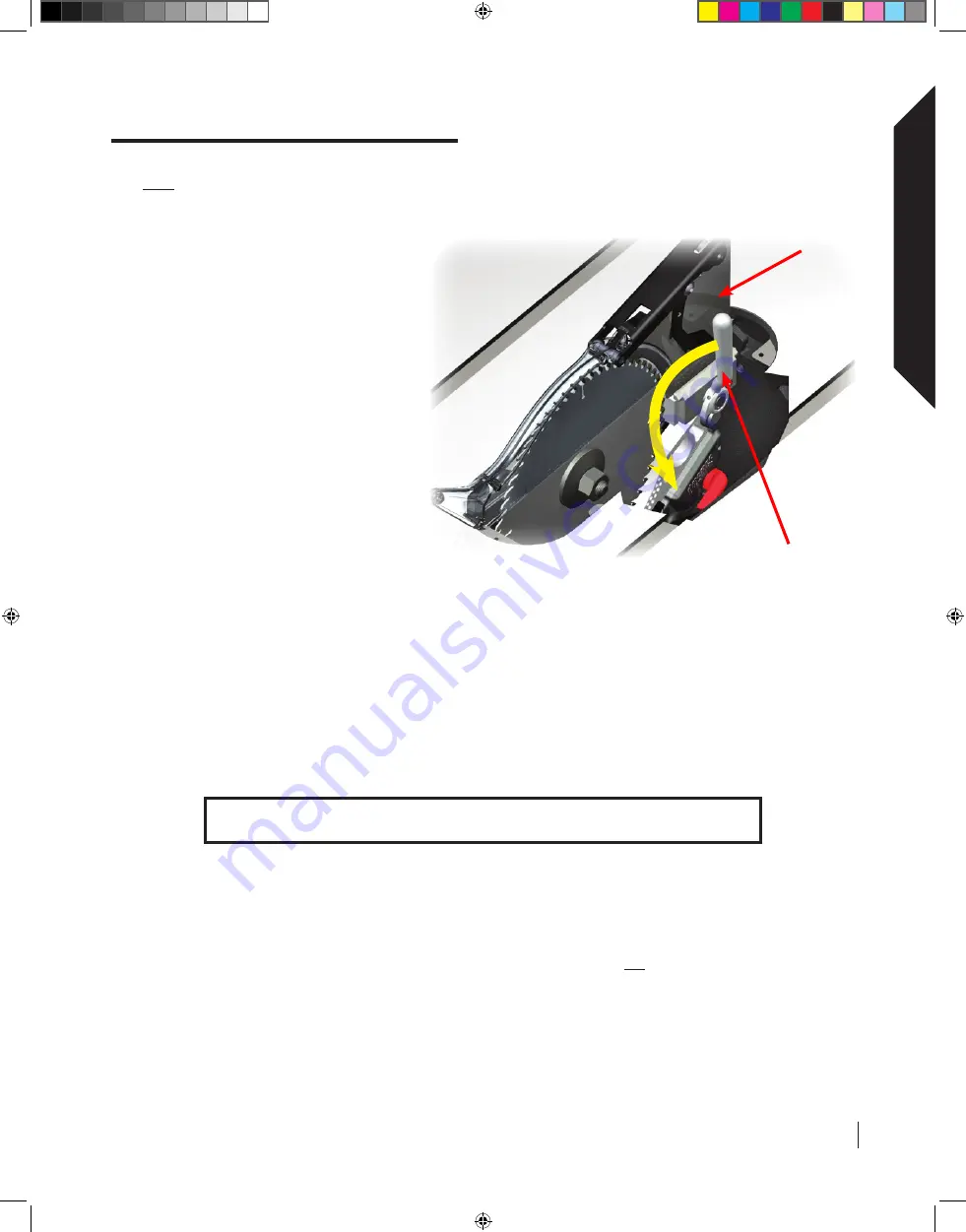
SawStop 10” Industrial Cabinet Saw 21
Setting Up
Your Saw
Note: when using a dado set, neither the blade guard nor the riving knife may be used. Instead, use other
protective devices such as push sticks and featherboards.
For the majority of cuts, the blade guard
should be used. To install the blade
guard, first remove the riving knife by
lifting the clamping handle fully upward
until the clamping plate moves away
from the riving knife. Then move the
riving knife slightly toward the right to
clear the positioning pins, and lift it out of
the clamp. To install the guard, position
the spreader in the clamp and flat against
the base plate. The positioning pins will
automatically align the spreader in the
correct position. Lower the clamping
handle completely until the limit shoulder
is against the limit screw. If the clamping
handle is difficult to lower, make sure the
spreader is positioned flat against the
base plate.
To remove the guard, use the same
procedure as removing the riving knife.
Similarly, to install the riving knife, use
the same procedure as installing the
guard.
The clamping force used to hold the spreader and riving knife in place can be increased if the spreader and
riving knife are not held securely, or decreased if too much force is required to lower the clamping handle. See
page 64 for instructions on adjusting the clamping force.
For instructions on the operation and use of the blade guard and the riving knife, please see page 34.
Note: both the spreader and the riving knife are 2 mm (0.079 in.) thick. Do not use a saw blade with a kerf less
than 2 mm with these tools.
WARNING!
Use the blade guard and spreader for every operation for which it can
be used, including all through-sawing.
Setting Up Your Saw
Fig. 14
push handle downward
to engage clamp
spreader
Cabinet Saw Manual 1st Reprint.i21 21
3/9/2010 8:32:45 AM
















































